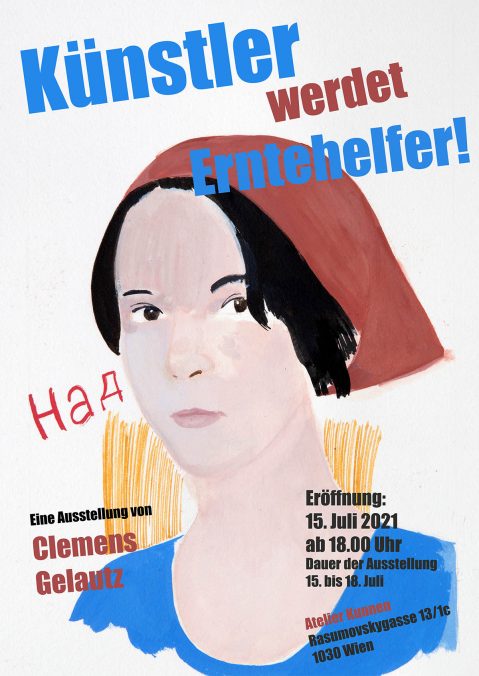
Aus diesem Umstand heraus, entwarf der in Wien lebende Künstler Clemens Gelautz, das Programm „Künstler werdet Erntehelfer“, in welchem er die heimischen Künstler dazu aufruft, sozialen Dienst am Land zu verrichten. Dabei wird aus einem simplen Aufruf, ein gesellschaftskritisches Konzept.
Die Ausstellung ist am 15. Juli 2021 von 18.00 Uhr bis 22.00 Uhr geöffnet und vom 16. Juli 2021 bis 18. Juli 2021 jeweils von 16.00 Uhr bis 19.00 Uhr zugänglich.
Adresse und Kontakt:
Atelier Kunnen
Rasumovskygasse 13/1c, 1030 Wien
www.instagram.com/clemens_gelautz/




